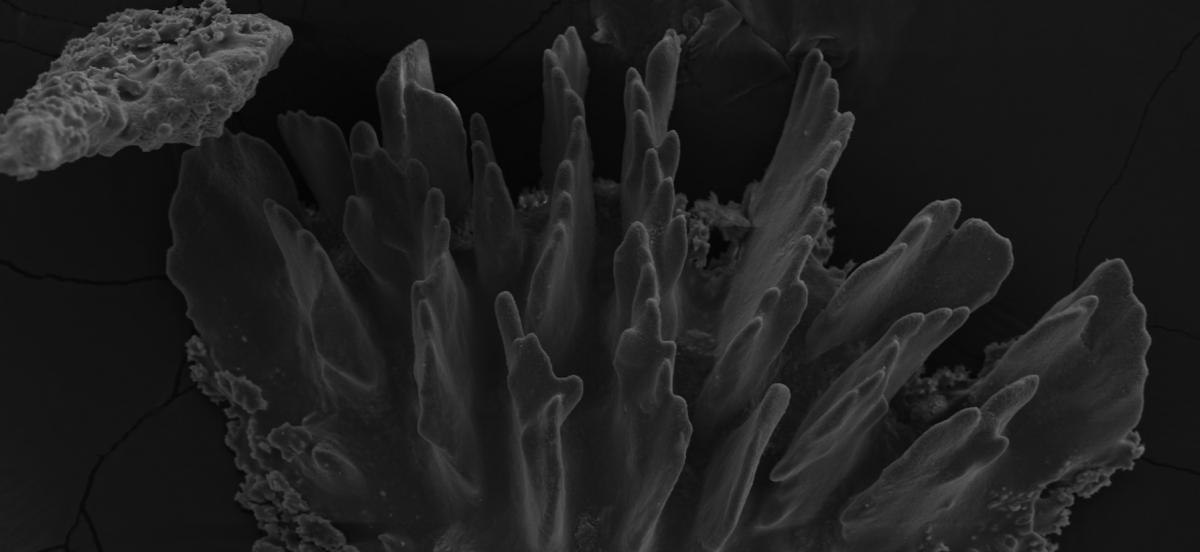2018 KINSC Scientific Imaging Contest Winners Announced

Details
The KINSC Scientific Imaging Contest is an annual contest for student-submitted images from experiments or simulations that are scientifically intriguing as well as aesthetically pleasing.
Judging is based on both the quality of the image and the explanation of the underlying science. First, second, and third place winners will have their images displayed on the walls of the KINSC.
First Place: Rina Rosnow '19

Ocean acidification (OA) can negatively impact many calcification-dependent organisms, including corals. In a recent experiment, samples of the octocoral Callogorgia delta were collected from the Gulf of Mexico and exposed to acidic conditions in the laboratory. The effects of OA on C. delta’s skeletal structure can be assayed with scanning electron microscopy by imaging “sclerites” – components of C. delta’s skeleton. By imaging these sclerites exposed to a variety of pH levels (both isolated and within tissue), the impact of OA on C. delta can be characterized. This work aids in identifying species that may be tolerant or sensitive to OA.
Second Place: Reilly Milburn '19

Recently, there have been detections of submillimeter galaxies at early redshifts as far back as z~7. In particular, some galaxies have strongly ionized carbon peaks in their emission spectra. In order to better understand the composition of these observed galaxies and the reason for these strong carbon emission lines, I generated simulated galaxies of early redshifts that also contain strong CIII emission in their spectra. This image is a visualization of one of my simulated submillimeter galaxies generated using Powderday and YT. The plot shows regions of extremely high density (i.e. stars and dust) in white.
Third Place: Yixuan Zhou '20

Many materials exhibit photoelastic effect. What is photoelastic effect? When we put a stressed photoelastic material between optical filters, we see fringes on the material: some area is darker and some area is lighter. The variation of the intensity of lights passing through the material corresponds to the variation of the stresses within the material, and hence physicists use this effect to visualize and analyze the distribution of forces in materials. The photo above shows fringes in a photoelastic particle when it was squeezed diametrically. This research was advised by Professor Ted Brzinski at Haverford College.



